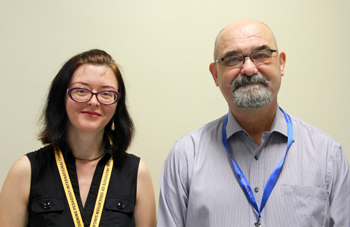Why Singapore’s English Teachers Should Embrace Singlish, Not Fight It
Is it time for Singaporean educators to embrace Singlish as a legitimate learning tool? What the Research […]
Read More
We tell stories to share our beliefs and values with others. This oral tradition is a social practice that has been around for as long as the human language. While many might be familiar with traditional storytelling, what then is digital storytelling and how does it, along with the use of drama, impact the teaching and learning of Character and Citizenship Education in the classroom today?
Written or spoken storytelling is often seen as a fundamental form of entertainment or a way of sharing knowledge with others. However, the employment and engagement of a palette of technological tools to this old-age tradition creates a different version of narration – digital storytelling.
Dr Phillip Towndrow, a Senior Research Scientist from the Office of Education Research (OER) at NIE, and his team wonder how such digital stories and new media narratives complemented with some drama can impact learning in the classroom. Particularly, he is interested to explore the effects of this multimodal learning platform within the context of Character and Citizenship Education (CCE).
To investigate this, he led his team as Principal Investigator on a digital storytelling (DST) project that involved two teachers and their respective CCE classes to understand how digital stories can be used in classrooms and the kinds of learning outcomes that both students and teachers experience.

Phillip Towndrow (right) and Galyna Kogut, a Research Associate at OER, who was also one of the presenters. Another presenter not mentioned in the article is Prudence Wales, Assistant Deputy Director of Hong Kong Academy for Performing Arts.
Providing students with the platform to collaborate, work together and create drama was all part of a CCE classroom activity in one secondary school.
The activity engaged students through “freeze frame” or tableau, where they watched a segment of a digital comic strip before creating a live still image to capture and communicate the meaning and concept of the next possible scene.
“I did this activity in class and students watched one story that runs in sequence in the form of comic strips,” explains Mr Rethinavel Shanmugam, a lecturer at NIE and also Co-Principal Investigator of the project. “At one point, I stopped the sequence and I asked them ‘what do you think happens next?’”
Encouraging students to participate in such activities promotes positive collaboration and discussion as they explore and deliberate on what could happen next.
“We want the students to be able to personalize their storytelling,” Phillip adds. “For them to do that, we created a drama-space where students felt comfortable and confident enough to share their personal stories.” For both Phillip and Rethinavel, opening the floor to drama in the classroom can create that needed space.
In a traditional classroom setting, the teacher tends to provide one-way instruction to the students, leaving them with few opportunities to engage in meaningful dialogues that aid their learning. A drama classroom, on the other hand, calls for mutual dialogue and two-way conversation between students and the teacher.
Rethinavel further explains the difference between a traditional classroom and a drama classroom: “What happens in a drama classroom is a very dialogic process because we are co-creating the work. The teacher is no longer just a person who gives knowledge. He or she is actually a co-constructor of knowledge with the students.”
He feels that the incorporation of drama in the classroom is aligned with the concept of DST as students need a voice to be able to construct a story.
“It is their voice that has to come through in the stories, and I think a drama classroom setting helps to facilitate that process by opening up a space,” he says. But more than just being a safe environment for students to be active participants, drama also creates authentic learning experiences for them.
“What happens in a drama classroom is a very dialogic process because we are co-creating the work. The teacher is no longer just a person who gives knowledge. He or she is actually a co-constructor of knowledge with the students.”
– Rethinavel Shanmugam on the difference between a traditional classroom and a drama classroom
“In a traditional classroom, the teacher tends to do most of the talking,” Rethinavel says. When that happens, he notes, the discourse is less heartfelt and genuine. The traditional classroom, although suitable for certain subjects like Mathematics, is less pedagogically suitable for subjects like CCE, which requires the teacher to tap into his or her own values when teaching.
For instance, in a traditional CCE classroom where a teacher is covering the topic on “telling lies”, the lack of teacher-student dialogue may result in the teacher simply telling the students that “lying is wrong” and “you do not lie”.
“The students can give you a controversial answer or comment which they feel is right. But knowing that you (as a teacher) might disagree, they give you the ‘right’ answer and that’s when teaching and learning becomes inauthentic in a traditional classroom,” Rethinavel explains.
As such, Phillip and Rethinavel believe strongly in incorporating drama in the classroom through the use of DST to evoke deeper learning, understanding and discovery of character and citizenship values in students. “To combine DST with drama for CCE, it’s got to be something that is innovative, nurturing, personalized and authentic,” concludes Phillip.